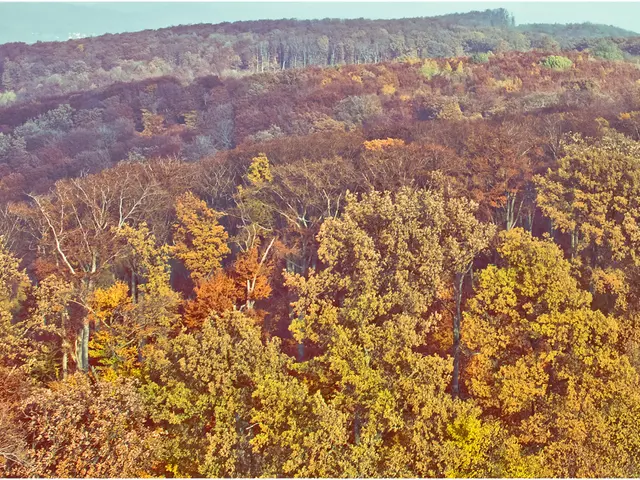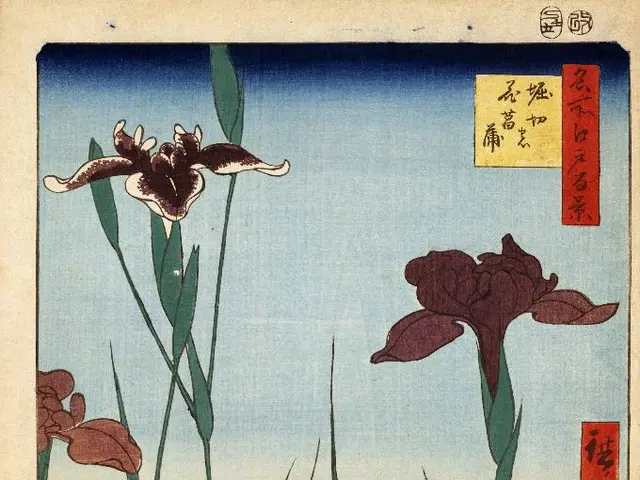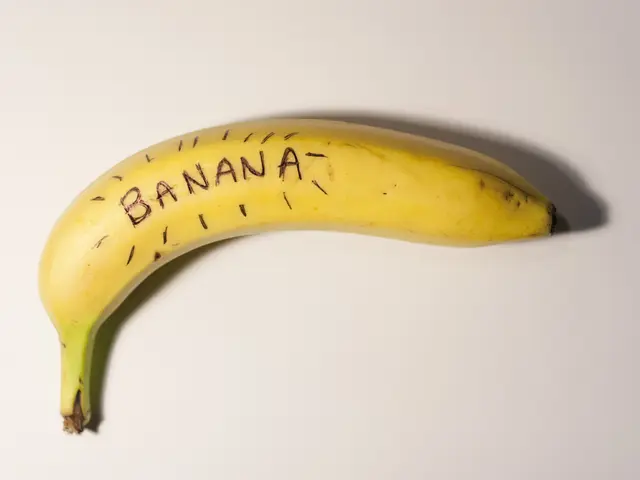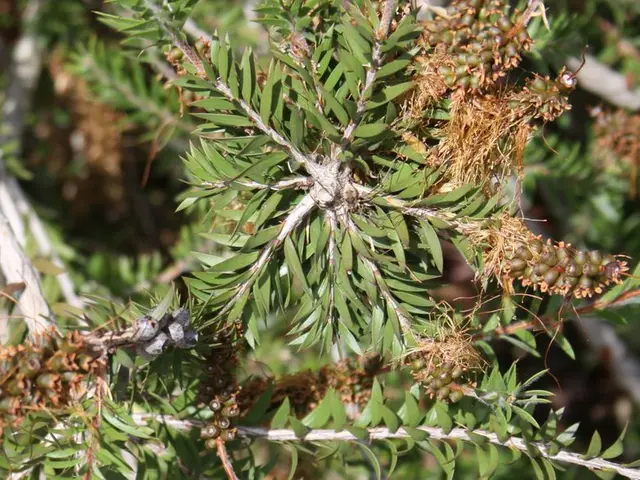Strategies for Cultivating Rhubarb: A Guideline
Growing Rhubarb like a Boss
Ever wondered how to make grandma's pie taste even better? It's all about the rhubarb! This cool-season veggie, mostly known for its sumptuous dessert appearances, is a breeze to grow and can provide nutrient-rich stalks for years to come. In this topic, we'll discuss how to plant, care for, and reap the rewards of your very own rhubarb patch.
Quick Stats
- Name: Rheum rhabarbarum L.
- Height: 2.5 to 3 feet (0.76 to 0.9 m.)
- Spread: 3 to 3.5 feet (0.9 to 1 m.)
- Sunlight: Full sun to part shade
- Soil: Well-drained soil with organic matter
- Hardiness zones: Zone 4 to 7
- Planting Time: Early spring or fall
Rhubarb, a hardy, early spring perennial, evokes memories of childhood and grandma's gardens. While its stems are sour, they're great in desserts, often paired with strawberries and used in pies, cakes, sauces, or jellies. Plus, it's loaded with nutrients: vitamins A and C, thiamin, niacin, riboflavin, and dietary fiber.
Plant rhubarb towards the edge of your vegetable or ornamental gardens, as it's a perennial that can produce for more than 10 years and might get in the way of annual plantings.
Important Note: The leaves and roots of rhubarb contain high levels of oxalic acid and anthraquinone glycosides, which are harmful if consumed. However, the edible stalks also contain small amounts of oxalic acid; one would have to eat large amounts to be affected.
Growing Tips
Want to be a rhubarb pro? Follow these tips for planting, caring, and harvesting your home-grown rhubarb.
Sunlight
Rhubarb requires a full-sun site but can tolerate part-sun conditions.
Watering
Provide about 1 inch (2.54 cm.) of water per week during the growing season.
Temperature & Humidity
Rhubarb thrives in cooler temperatures, below 75 degrees F (24 C). The leaves will die back with the first hard frost.
Soil
Well-drained soil with plenty of organic matter is preferred. Loamy soil is best, but rhubarb can adapt to all soil types. Add compost or well-rotted manure to boost organic matter and nutrients for plant health.
Fertilizer
When planting, mix fertilizer (11-15-11) into the soil at a rate of 2 cups per 100 square feet of space. Side-dress with 3/4 cups of 11-15-11 fertilizer per plant in early spring as new growth begins and after harvesting, apply a half cup of nitrogen fertilizer (e.g., 16-0-0) to promote leafy growth.
Problems, Pests & Diseases
Rhubarb is generally low-maintenance and rarely battled by pests and diseases. However, in poorly-drained soils, it might develop root rot. Leaf spot diseases may occur; remove and discard infected stalks. Dispose of all foliage after the first hard frost. Curiously, rhubarb may exhibit symptoms of a virus - discolored leaves and abnormal growth. Remove and discard any suspected plants. Rhubarb curculio, a snouted beetle, and stalk borers can affect your plant, especially if there's abundant grassy weeds nearby. Curly dock acts as their host plant, so be mindful of that when dealing with these pests.
Pruning
Pruning is minimal; remove damaged leaves, flower buds, and seed stalks as needed. If the plant shoots seeds, promptly remove the seed stalk as it wastes energy.
Propagation
Divide rhubarb every six to ten years. To do this, use a sharp shovel to cut the clump into halves or thirds and replant in a new area. Share some of the divisions with friends or garden enthusiasts! Rhubarb can also be started from seed about six weeks before the last spring frost. Plant seeds, keep them moist, and harden them off before transferring them outside. When planting crowns, dig a hole 2 to 3 inches (5 to 7.6 cm.) deep and space each plant 3 feet apart. Mulch around plants to discourage weeds and warm the soil.
Harvesting
Harvest rhubarb in spring once the plant is established; refrain from harvesting the first year and only harvest a few stalks the second year. From the third year onwards, start harvesting until the stalks thin during early summer (around 8 to 10 weeks). Always leave about half the plant unharvested to allow for replenishment the following year.
To harvest a stalk, twist and pull it from the base. Store fresh rhubarb in the refrigerator for up to four weeks. Remove and discard the leaves (even though they contain oxalic acid, it decomposes quickly without harming the compost).
Varieties
Rhubarb comes in a variety of colors, from green to almost red. The redder varieties offer a more appealing visual appeal in desserts, compared to their greener counterparts that may turn gray when cooked. Suitable cultivars for Zone 4-7 include MacDonald, Crimson Red, Victoria, Canada Red, and Cawood Delight. For vibrant red stalks, consider varieties like Cherry, Ruby, and Strawberry.
FAQ
Can I eat rhubarb leaves?The leaves and roots are toxic and should never be ingested. The stalks are edible but contain small amounts of oxalic acid. People with specific health issues such as kidney disorders, gout, or rheumatoid arthritis, among others, should be cautious about consuming rhubarb.
Does a late freeze affect oxalic acid levels in rhubarb stalks?While it remains uncertain whether a late freeze forces oxalic acid into the stalks, it is advisable to avoid eating frozen stalks due to potential unfavorable taste and texture.
Can I harvest rhubarb stalks in the summer?Harvest in the spring and early summer only, allowing the plant to replenish for the following year. Occasionally harvesting during the summer for special events will not harm the plant.
Can I freeze rhubarb?Yes! Freeze extra rhubarb to enjoy with other fruits and vegetables as they ripen.
About the Author
After earning an English degree from Oklahoma State University, Susan Albert embarked on a career in communications and penned garden articles for magazines, along with a newspaper gardening column for several years. She contributed South-Central regional gardening columns to Lowes.com for four years and served as an Oklahoma master gardener for 17 years.
After planting your rhubarb, nurture it in your home-and-garden by following effective growing tips. Make sure to provide ample sunlight, water, and nutrients for the rhubarb to thrive, and after establishing your patch, you can start harvesting this nutrient-rich vegetable for delicious home-made pies and desserts that add a delightful twist to your lifestyle. With proper care and attention, your rhubarb patch could become a beloved part of your gardening endeavors for many years to come.








